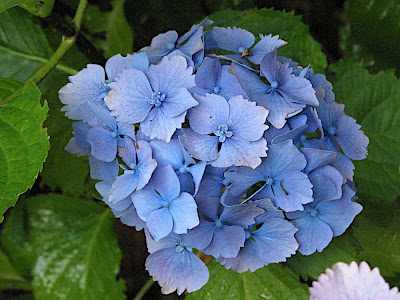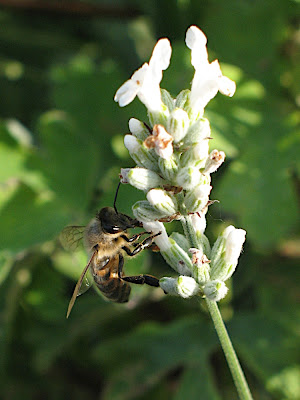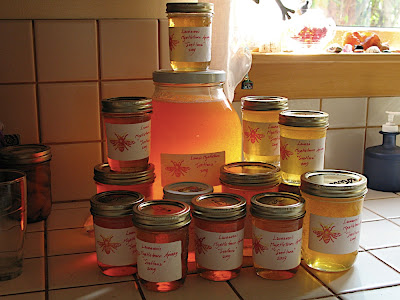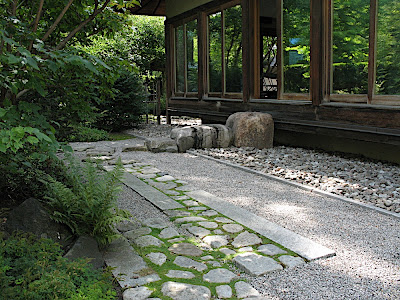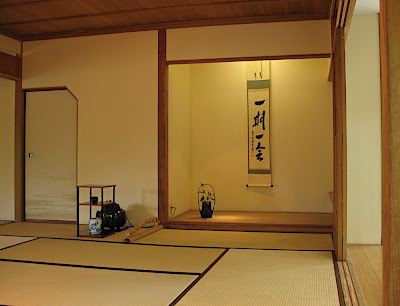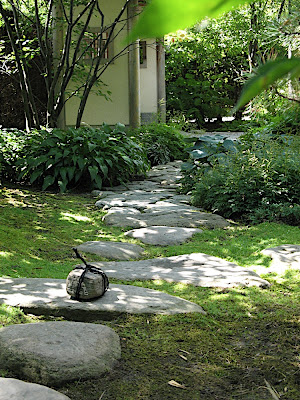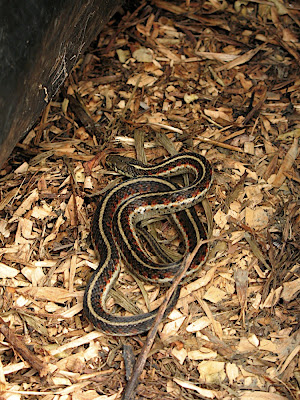This was my first summer trip to Montréal. The other two times the city was blanketed in snow. Although I enjoyed winter there, it was nice to see the city in another season. Leafy green trees and blooming flowers abounded. Of the flowers, white hydrangeas, purple coneflowers and golden black-eyed Susans seemed to dominate. I saw many wild bees working the flowers, but not one honeybee.
I was left to be tour planner and guide for our trip, so I chose what I wanted to see & do. On the first day, I dragged Karin and Kalen around Old Montréal, then through Chinatown and downtown to the Fine Arts Museum.
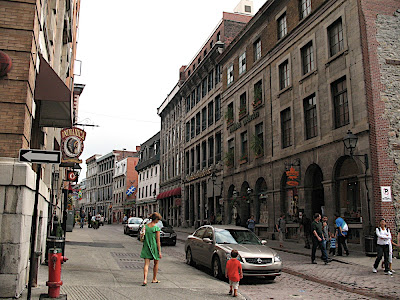
Vieux Montréal has a lot of nifty architecture and history, but is mostly filled with kitschy tourist gift shops. The old port plays host to a number of family attractions in the old port like an IMAX theatre and a science centre, which were infested with wild summer day camp children. Karin and I thought the old port was much more interesting in winter, when the Bonsecours Basin became a skating rink, and its island park hosted an ice sculpture. I think we spent more time having a leisurely French lunch on Rue Saint-Paul than on the rest of the area.

I was a little surprised when I rediscovered a monument to Admiral Nelson, who was the big naval hero against the French in the Napoleonic Wars. But then I remembered that Québec is in Canada, which is still under the rule of the Queen of England. I had to take several photos of Nelson's Column for the Siren crew.
Near Nelson's Column, we came upon an alley filled with artists selling their wares. We liked one photographer's work, and came back a few days later to buy some of his pieces. It wasn't until after we bought them that we realized we had to get them home. The solution was to mail them, but we had to ditch the mat board for the largest, so it would fit in the envelope (they arrived safe & sound).

Instead of catching the Métro or a bus to the Museé des Beauxs Arts, I struck out on foot, so as to see more of the town. We passed through Chinatown, which seemed small and quiet. I saw a sign for bubble tea, which I had heard about, so we had to try some. It was a disappointment. The "bubbles" are large balls of dark-colored tapioca, served in fruit juice reminiscent of Kool-Aid. The bubbles are boring: no flavor, unsweetened and kind of tough. Their greatest use was as pea shooter ammunition and subsequent compost in a tiny out-of-the-way park. Bubble tea is now checked off my thrill-a-minute bucket list.
I love the Fine Arts Museum. I've gone every time I've been in Montréal. On our first day, we had time to go through some of the permanent collection before the museum closed. I was sad to see that a favorite still life had been rotated out, but enjoyed seeing other old favorites and new pieces. The museum occupies two buildings that are across the street from each other. There is a convenient passage and gallery space below the street.

This time, this gallery space was undergoing some construction. Instead of putting up boring barricades along the passage, the museum cleverly altered and reproduced some of its art pieces on the screening tarps.

On the following day, we returned to see the temporary exhibit "
Expanding Horizons". It showed landscape art from both Canada and the US, comparing national idealogy and how it was represented in the artists' visions. I'd not before thought about how widely Manifest Destiny affected art in the US, nor that Canada's art had not been affected.

We played most of that second day up on Mount Royal, which sits in the midst of the city. Mont Royal and other mountains in the area were "bulldozed" by glaciers during the Ice Age. Each of these
roche mountainees have a gentle slope on the northwest and a steep bluff on the southeast. A park spreads over the top of the mount. A lookout at the Chalet provides views of the city to the south and east, the Saint Lawrence River and a few of the mount's fellows in the distance. On our last trip, Karin and I dashed through the snow and cold breeze from building-to-building, warming up a bit in each one before heading to the next. This time we were able to stroll through the woods and enjoy the warm air. I was surprised at the lack of birds, but considering that breeding season is over, I shouldn't have been.
Two cemeteries extend down the gentle back of the mount. I love cemeteries, and these were wonderful. There were very few flat headstones, even among the newer graves. Flowers and trees abounded. It seemed that many old, eroding gravestones had been replaced with fine reproductions. We noticed this because there were still many old stones awaiting their turn. Before we went to the cemetery, I had used Google maps to take a peek. I'd noticed that one area had an almost checkerboard pattern of green rows: one square ran north-south, and the adjacent squares ran east-west.

The mystery was solved on the ground. The stones had been placed in rows, back-to-back, with shrubs growing between. It seemed that different immigrant communities had purchased large areas in the cemetery. We wandered through Russian, Greek, Scottish and Irish areas, as well as others. Although Québec is French-speaking and French-oriented, these cemeteries reminded me that there is a rich mix of people and cultures here.


